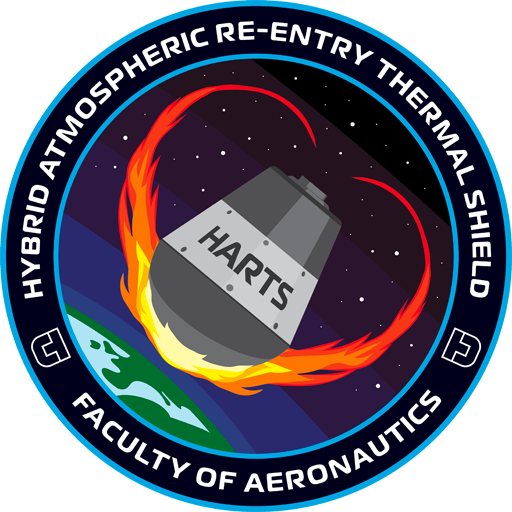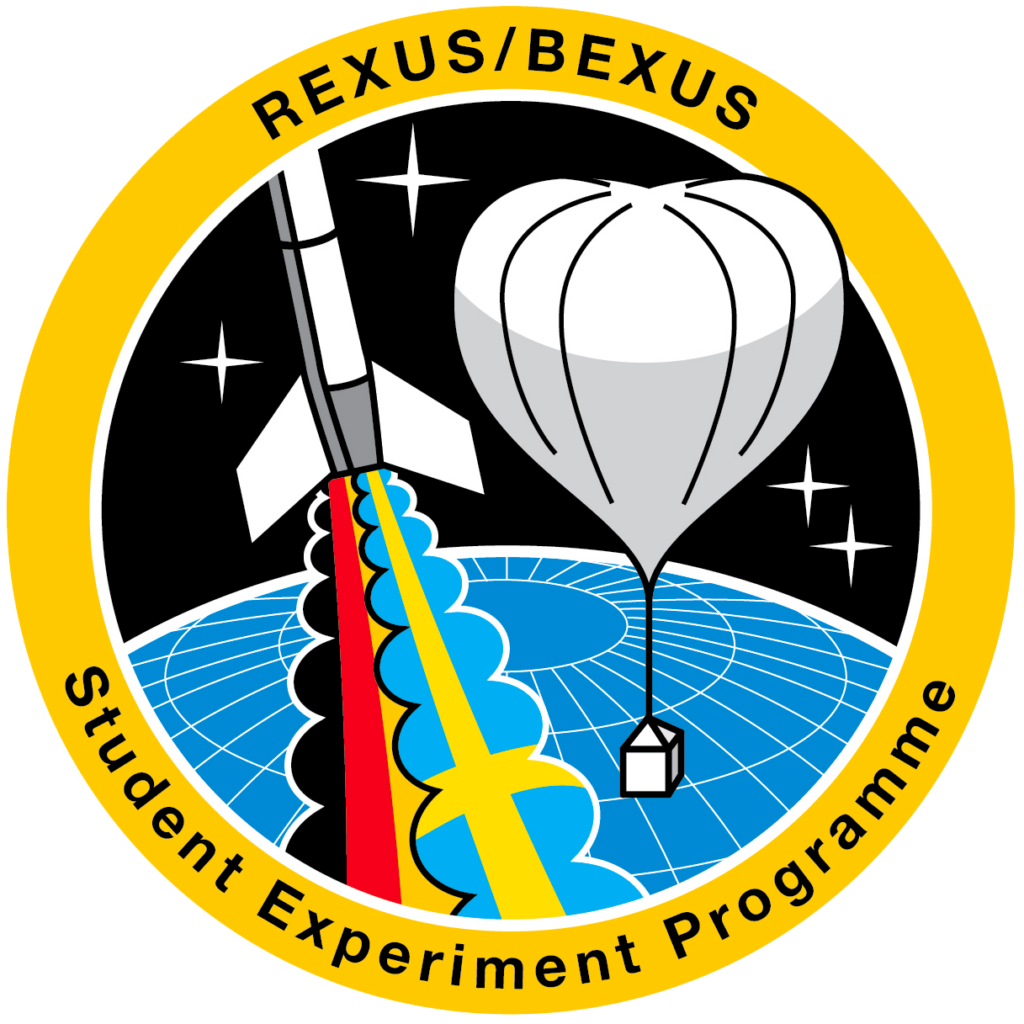Hybrid Atmospheric Re-entry Thermal Shield
Two students from the Technical University of Košice, Patrik Rychtarčík and Lukáš Hudáček, took part in the 18th ESA Student Aerospace Challenge as team TUKERS. Their project focused on an actively cooled heatshield using cryogenic hydrogen to reduce heat during spacecraft re-entry — aiming to improve reusability and cut costs.
Building on their earlier work, Active Heatshield Cooling Solutions, they were inspired by rocket nozzle cooling and advised by ArianeGroup to develop it further. Their concept showed potential integration into Ariane 6’s carbon-based heatshield.
Presented at the “Suborbital Day” in Paris, their work won the ArianeGroup Prize for its complete and innovative system design.
HARTS objective
The objective of HARTS (Hybrid Atmospheric Re-entry Thermal Shielding) is to design and test a novel hybrid heatshield system for atmospheric re-entry applications.
The hybrid system integrates active and passive thermal protection methods in an effort to reduce the drawbacks of each system and enhance performance during high-speed atmospheric re-entry. HARTS features two primary units: a Free-Falling Unit (FFU) and a Rocket Mounted Unit (RMU). The FFU is designed to be ejected out of the REXUS rocket by the RMU ejection system. FFU houses the hybrid heatshield itself, and all equipment needed for experiment operation such as thermal sensors and inertial measurement devices to monitor its performance during free fall.
The experiment goals are the measurement of aerothermodynamic parameters such as surface temperature and heat flux and test the functionality of a helium cooled temperature regulation layer incorporated into the heatshield structure. All flight data is saved and retrieved by a safe landing using a parachute recovery system and recovered using a satellite-transmitted GNSS positional data.
HARTS is a technology demonstrator which aims to prove a concept of non-traditional re-entry system using leftover helium from tank pressurization to increase reusability and lower costs of spaceflight.

REXUS/BEXUS

The REXUS/BEXUS programme is realized under a Bilateral Agency Agreement between the Swedish National Space Agency (SNSA) and the German Aerospace Center (DLR). The Swedish share of the payload has been made available to students from other European countries through a collaboration with the European Space Agency (ESA). [1] EuroLaunch, a cooperation between the Swedish Space Corporation (SSC) and the Mobile Raketenbasis (MORABA) of DLR, is responsible for the campaign management and operations of the launch vehicles. Experts from DLR, SSC, Center of Applied Space Technology and Microgravity (ZARM) and ESA provide technical support to the student teams throughout the project.
Our Mission

